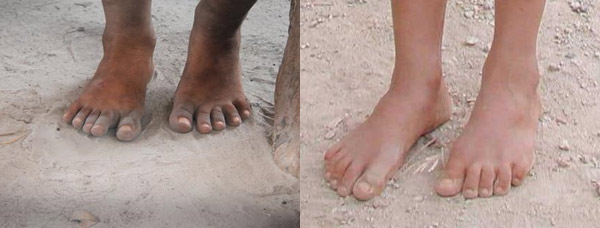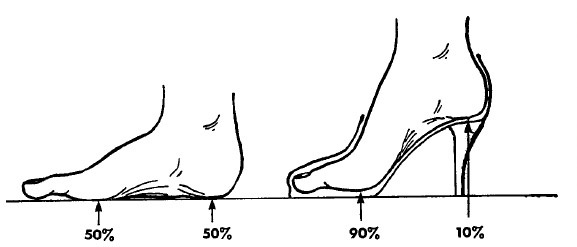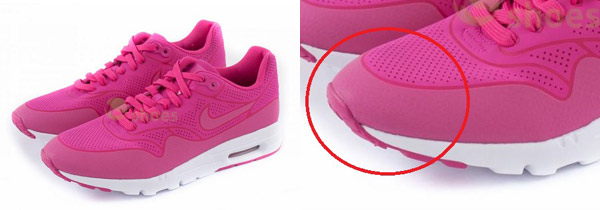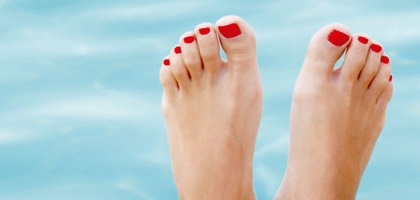News - Learn about the secrets of the footwear industry!
What you should and should not do to your feet!
On today’s post, we will talk about a very current theme that has been getting a lot of attention recently. This theme focus on the constant debate about if shoes do us more harm than good and if walking barefoot is our inherent form of being. Perhaps this is an odd post coming from an online shoes store, but we believe that this information was worth to be shared with our readers. Do you want to know more about this topic? You just need to click!
Since our health has become one of today’s current themes, we thought that it would be important to focus our post on a body part that is directly connected to the online store, which is, of course, the feet. And when we analysed this topic, we encountered the following question: Do shoes harm our feet?
Well, it could seem like a ridiculous question the first time you hear it. I mean, shoes, by themselves, are something that has been worn even before the beginning of the Common Era. However, even then, shoes were not something that was often used and there was a clear preference for walking barefoot. The Romans, on the other hand, saw shoes as something necessary in a civilized world and, when the Roman Empire emerged, they ensured that other people adopted that vision, including the Lusitanian people.
However, recently made studies and tests have come to the conclusion that perhaps the shoes that we use in our day-to-day are more harmful than what may appear. For example, when you compare the feet of people of different origins, investigators concluded that the Zulu people, who are of southern Africa and usually walk barefoot, had the healthiest feet, while the European feet, which are shoe-wearing people, were the least healthy.
To further develop this question, look closely at the two pictures below:

While on the first picture, you can clearly see that the toes are more spaced out and the feet are wider, on the second image, the feet are longer and the toes are closer to each other. And now, look closely at your feet… Are they more similar to the ones from the first or the ones from the second image? Well, if they are anything like mine, then the answer is clearly picture number 2. Is it the difference of the foot’s format due to the shoes that we used? Well, yes. Despite its utility nowadays, investigators claim that our shoes limit the development of our feet, since they adapt to the shape of the shoes, thus affecting their natural shape and movement. It is for this reason that Dr. William A. Rossi wrote: “Natural gait is biomechanically impossible for any shoe-wearing person”. To learn more about the theories of this podiatrist, you can read his articles here: nwfootankle.com/foot-health/drill/2/110.
This claim may be even be truer when we refer to high heel shoes. There are several women that like to wear high heel shoes, since they believe that they can then have a more elegant posture and a sophisticated look. Both during formal situations and at the workplace, this type of shoes is the preferred choice for the majority of women. However, could it be that it has more disadvantages than advantages? There are people that believe so. For example, when you are barefoot, the weight distribution on your foot is equally divided between the front and the back, i.e. 50-50. However, when you are wearing high heels, this distribution is altered, since there is more weight at the front of the foot. This may even happen with high heel shoes with a platform at the front.

Then, does this mean that if I don’t use high heel shoes I will have a natural walk of the foot? Well, not really. No matter how much a shoe manufacturer makes their shoes more comfortable and cushioning with the latest technologies, the most likely is that the final result will always be the same: shoes that do not let the feet move naturally.
With this in mind, I would like to ask you a little question. Do you have in your wardrobe shoes, more usually sneakers, with a toe spring, or with the toe tip slightly bended upwards, as shown in the photos that are below?

Many brands incorporate this detail in the designs of their shoes, since it gives you an extra boost in your steps, which could be beneficial, for example, when you are playing sports. However, when walking barefoot, you don’t have the toes bended like that, because the foot adapts, in a flexible and malleable way, to each step it takes.
However, don’t think that all of this is only applied to women’s shoes. Many times, in men’s sneakers, shoes and boot, manufacturers make their shoes with the idea that the foot needs support. Therefore, they incorporate steel shanks and air cushions in their shoes with that purpose. The most common is the reinforced heel that, though protecting you, will decrease its freedom of movement and its strength. A clear example where this is evident is when we see the marathon winners, usually from African countries, like Kenya. Well, in these countries, the custom is to walk barefoot and these marathon athletes usually only wear shoes during international competitions and events. Hence, they have the necessary strength on the heel tendon to have more stamina in marathons. Another similar case is the padded collar of the shoes, which also restrict the ankle’s development.
And now you ask yourself, is there any alternative? Do we always have to walk barefoot? Well, yes and no. Despite walking barefoot being the most efficient choice, it does not mean that is the most practical. However, we believe that certain cares should be incorporated in order to improve your feet’s health. Do you to know what they are? We then leave you with our 3 tips:
- Try to vary the type of shoes that you use daily. Always using the same type of shoes ensures that the foot stays limited to certain movements and shape. If you vary between sandals, clogs, sneakers, boots, etc… your feet will have more freedom of movement and will not be restricted to a specific shape.
- Do not use high heel shoes frequently, especially if you have to walk a lot during the day. A good alternative is to have a pair of flat sandals in your bag. Thus, when, for example, you are waiting for the train, you can use these flat sandals and switch them quickly when you arrive at work.
- Walk barefoot as much as possible. Yes, I know that I mentioned that this isn’t the most practical solution, but it still has the best results. And you don’t have to always walk barefoot. The most advisable is to walk barefoot when you are at home, in your backyard or at the beach. For example, in Japan, there is the tradition of when you enter a house, you leave the shoes at the door and you walk barefoot, with socks or slippers, and this is applied by both the people that live in the house and its visitors.
So, what do you think? Will you start to adopt these tips that you mentioned to you? Or maybe you already apply them? Then, tell us if they were beneficial to you and if you have any more advice that you would like to add to our list. We want to know your opinion!

 Português
Português Español
Español

